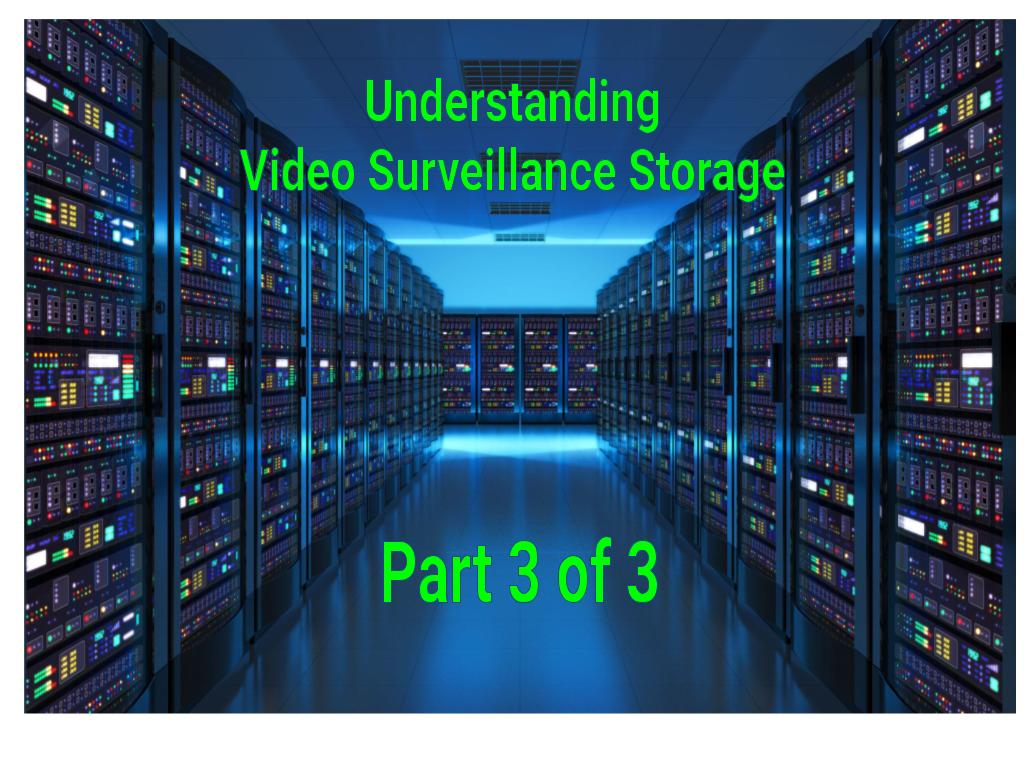
Not all cloud CCTV systems are created equal. There are some key differences between cloud video surveillance systems for businesses that you should consider, including hybrid or cloud-managed surveillance systems, the cloud data centers and who owns and operates them, and bandwidth management. The benefits of commercial cloud systems can differ depending on the industry and the type of surveillance, retention, and operations needed for the business. This article will look at those differences of CCTV cloud system storage. To compare DVRs, NVRs, and cloud surveillance storage options, click on the the two other parts of this informational series:
True Cloud Video Surveillance For Business
A true cloud system, like the Eagle Eye VMS (video management system) is specifically engineered for cloud computing. It provides valuable capabilities that premises-based systems can’t. A true cloud system’s architecture makes maximum use of modern cloud computing technology, through a “pay only for what you use” subscription model. A true cloud system affordably and securely provides scalable capabilities that can’t be achieved in client-server on-premises systems. Click here to learn more about true cloud technology or reference the chart below for a comparison of true cloud surveillance systems and cloud-managed systems that run more traditional client-server software.
Understanding Hybrid Cloud Systems
When comparing cloud-based surveillance systems to network video recorders (NVRs), there is some middle ground as well where functions of both systems are combined to create a hybrid model. Many security manufacturers are developing hybrid NVR/cloud storage systems that combine the remote features of cloud computing with the on-site storage of an NVR. This hybrid solution is commonly referred to as a cloud-managed system. These systems can provide the benefits of cloud like continual updates and maintenance and 24/7 remote video monitoring and access, but still ultimately store video on-site.
There are a number of reasons to consider a hybrid solution, one being for business locations that have limited internet access to transmit all video to the cloud, but still have a need for remote viewing of surveillance video. With a hybrid system some percentage of video is stored on the cloud, usually as a low resolution video clip with full resolution stored on-prem. Depending on the system there is a capability to download the full resolution video via the cloud, but this functionality should be researched when considering a hybrid system because there can be some barriers to quick access of full-resolution video.
A hybrid system usually still includes the upfront cost and maintenance of the on-premises NVR storage device. Where cloud-managed systems fall short of a true cloud video management system — where all aspects, including storage and management, are on the cloud — is with scalability and resource pooling. A true cloud system allows users to adjust resources, including retention, processing, and bandwidth without any limits. A cloud-managed system that is still tied to local hard drive will be limited to storage and computational power of that device. Similarly true cloud systems allow for easier expansion to add new cameras or locations without limits to the on-premise hardware.
With resource pooling, a true cloud system can offer new features and upgrades like video analytics without needing upgrades to hardware. One example is Eagle Eye Smart Video Search, a free new security analytics feature available to all Eagle Eye customers in the summer of 2022. Because Eagle Eye is a true cloud surveillance system, customers can use this powerful artificial intelligence feature to search all of their video without upgrading any hardware because this feature runs on the cloud. Similar search features offered by cloud-managed surveillance systems are limited to the hardware that can run this feature and can require expensive upgrades, new fees for the feature, or new hardware.

Some cloud-managed systems store video on the camera instead of on an on-premise NVR. These cameras connect directly to the cloud system but can add an extra expense for the technology to retain the video in the camera and cause surveillance disruptions if a camera fails and needs to be replaced. Similarly with a cloud-managed system that is storing data on the camera, storage is limited to what the camera can physically hold, so a change to retention time or resolution could require the purchase of a new camera that can hold more data.
Eagle Eye Networks specializes in true cloud surveillance but does offer a hybrid solution with their Cloud Managed Video Recorder (CMVR). The CMVR provides on-premises storage in addition to cloud storage and functions that come with the Eagle Eye VMS. Eagle Eye Cloud-Premises Flex Storage allows the customer to select how much video is sent to the cloud and how much is stored on-site.
Cloud Data Centers
If you’re leaning towards a cloud-based CCTV storage system for your business, there are a few more things to consider. The title of this series is “Where’s My Surveillance Video”, but when considering a cloud surveillance system it’s also important to ask who operates the cloud data center that retains the video and data. Many cloud surveillance providers use 3rd party services like Amazon Web Services (AWS), Google Cloud, or Microsoft Azure for video storage which could mean limits to access and scaling a system, or data use contracts.
These large companies are responsible for the security of this data. Ultimately storing massive amounts of data at these 3rd party data centers comes at a premium cost and that cost is passed on to the customer. Depending on the agreement your security provider has with the data center can mean that the security provider becomes a middleman between the customer and the cloud.
Eagle Eye Networks owns and operates all of their cloud data centers around the world. Each customer’s data is redundantly stored at three different locations so that it is always immediately available even in the event of a data center outage or any unexpected circumstances.
The Bandwidth Myth
There is a myth that cloud-based surveillance systems require a business to upgrade to higher speed internet. It is true that transferring large amounts of video does require bandwidth and that camera count, recording resolution, and motion activity can all affect bandwidth and vary with each user. But the right cloud storage system should have a solution that will work with a business’ existing internet capabilities and not impact the network.
Eagle Eye Networks uses intelligent bandwidth management that adjusts transmission and bandwidth use dynamically, making sure that everything works with a customer’s existing internet connection. Bandwidth management also allows users to set exactly how and when the VMS transmits data to the cloud without impacting their network. This ensures the customer’s network bandwidth is free when needed, without losing any access to surveillance video at any time. The data transmission can be scheduled for off-peak times without interrupting operations.
Two ways that bandwidth management can benefit customers is through schedules or an allocated amount of bandwidth. By establishing a schedule, a business can set data transmission to happen after business hours, when the network is not being used by employees. For allocation, the transmission can be set to a determined percentage of total bandwidth and slowly transmit data to the cloud without impacting business network operations.
We hope this three-part series was helpful in explaining the different types of business surveillance systems and the unique features available from each. If you still have questions on how to find the right commercial surveillance system, click here for nine tips to find the right surveillance system for your business.
If you would like to learn more about Eagle Eye Networks Cloud VMS, click here to schedule a demo or talk to one of our sales experts.

Since 2012, Eagle Eye Networks has provided smart cloud surveillance solutions, leveraging AI to drive natural language search, automation, and more. Eagle Eye’s camera-agnostic approach heightens security while saving money, time, and resources.
Other posts that might interest you

How automation gives your existing surveillance cameras new skills
Automation and video surveillance: A perfect fit A single office building, municipal center, or school can have dozens or even hundreds of cameras running, covering areas from hallways to community…
April 28, 2025
Why multifamily property managers should choose cameras backed by AI
Multifamily property video security challenges Multifamily properties require constant attention to maintenance, security, and personal safety — and always on tight budgets. Video surveillance has long been used to help,…
April 25, 2025
Eagle Eye Cloud VMS and Axis cameras: now even more directly connected
Axis Communications is literally the first name in IP security cameras — Axis actually invented the networked digital camera, and in 1996 released the groundbreaking Axis NetEye 200. Along with a…
April 21, 2025








